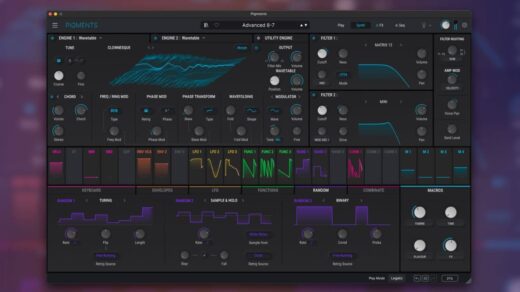In today’s world, wireless communication is everywhere. From our phones to our cars, we rely on invisible signals to stay connected. One important part of this technology is UHF 403.527 MHz.
This special frequency is part of the Ultra High Frequency (UHF) band, which is used for many different things.
UHF waves are like super-fast, invisible messengers. They can travel through walls and carry lots of information quickly.
The 403.527 MHz frequency is special because it’s good for both talking over long distances and sending data.
Imagine you’re a police officer needing to talk to your team, or a farmer checking on your crops from far away. This frequency helps make that possible.
It’s also used in weather balloons, smart city projects, and even some internet-connected gadgets in your home.
UHF 403.527 MHz

In this guide, we’ll explore the world of UHF 403.527 MHz. We’ll learn what it is, how it works, and why it’s so important.
We’ll look at its good points and its challenges. By the end, you’ll understand how this invisible helper keeps our world running smoothly.
So, let’s dive in and discover the fascinating world of UHF 403.527 MHz!
What is UHF?
UHF stands for Ultra High Frequency. It’s a special range of radio waves that we use for many things in our daily lives. Let’s break it down:
- U stands for Ultra
- H stands for High
- F stands for Frequency
UHF waves are very fast-moving radio waves. They’re faster than the waves used for FM radio or TV, but not as fast as the waves used for things like X-rays.
Here are some key points about UHF:
- Frequency Range: UHF waves have frequencies between 300 MHz and 3 GHz.
- Wavelength: UHF waves are shorter than lower frequency waves.
- Use: We use UHF for things like TV broadcasts, cell phones, and walkie-talkies.
- Travel: UHF waves usually travel in straight lines and can go through walls to some extent.
Think of UHF waves as very fast, invisible messengers. They can carry lots of information quickly, which is why we use them for so many things.
Key Characteristics of UHF
UHF waves have special features that make them useful for many things. Let’s look at these key traits:
- Line-of-sight propagation
- UHF waves travel in straight lines, like a laser beam.
- They can go through walls better than higher frequency waves.
- This makes them good for indoor and outdoor use.
- Compact antennas
- Because UHF waves are short, we can use small antennas to catch them.
- This is why cell phones and walkie-talkies can be small and portable.
- Higher bandwidth
- UHF can carry more information than lower frequency waves.
- This means faster data transfer and clearer voice calls.
- Resistance to noise
- UHF signals are less affected by some types of interference.
- This leads to clearer communication in many situations.
Here’s a simple table to sum up these characteristics:
| Characteristic | Description | Benefit |
|---|---|---|
| Line-of-sight | Travels in straight lines | Good for direct communication |
| Compact antennas | Allows for small devices | Portable and easy to use |
| Higher bandwidth | Carries more information | Faster data and clearer voice |
| Noise resistance | Less affected by interference | Clearer signals in many environments |
These features make UHF great for many uses, from TV broadcasts to public safety communications.
Understanding 403.527 MHz
Now, let’s zoom in on the specific frequency of 403.527 MHz. This frequency is part of the UHF band and has its special uses.
What does 403.527 MHz mean?
- It’s a specific point on the radio wave spectrum.
- The number tells us how many million times the wave vibrates per second.
- In this case, it vibrates 403,527,000 times per second!
Where does it fit in?
- 403.527 MHz is part of the 403-470 MHz band.
- This band is used for many important things:
- Land mobile radio systems (like police and fire radios)
- Public safety communications
- Some scientific and medical equipment
- Weather tools
Technical details:
- Wavelength: About 0.74 meters (about 2.4 feet)
- Range: Good balance between distance and ability to go through walls
- Channel width: Usually narrow (12.5 kHz or 25 kHz)
- How it’s used: Often with FM radio or digital systems
Think of 403.527 MHz as a special lane on a busy highway. It’s reserved for certain types of “traffic” (data or voice) and has rules about how it can be used.
This frequency is great for:
- Talking over medium distances
- Sending small amounts of data quickly
- Working well in both cities and open areas
Understanding 403.527 MHz helps us see how this specific frequency fits into the bigger picture of wireless communications.
Applications of UHF 403.527
The 403.527 MHz frequency is used in many different ways. Let’s explore some of its main applications:
- Land Mobile Radio (LMR) Systems
- Used by:
- Police and firefighters
- Ambulance services
- Power and water companies
- Truck and taxi fleets
- Why it’s good: Works well in buildings and over medium distances
- Used by:
- Telemetry and Remote Control
- Used for:
- Monitoring factory machines
- Collecting weather data
- Controlling equipment from far away
- Reading water and electric meters automatically
- Benefit: Can send small amounts of data quickly and reliably
- Used for:
- Internet of Things (IoT) Devices
- Examples:
- Smart city sensors (like traffic lights or parking meters)
- Farm monitoring systems
- Asset tracking (finding where things are)
- Environmental sensors (checking air quality, etc.)
- Advantage: Good balance of range and power use
- Examples:
- Weather Tools
- Uses:
- Weather balloons
- Atmospheric measurement devices
- Environmental monitoring stations
- Why it’s chosen: Can send data over long distances
- Uses:
Here’s a simple table summarizing these applications:
| Application | Examples | Key Benefit |
|---|---|---|
| Land Mobile Radio | Police radios, ambulance comms | Works well in buildings |
| Telemetry | Factory monitoring, meter reading | Quick, reliable data transfer |
| IoT Devices | Smart city sensors, farm monitors | Good range, low power use |
| Weather Tools | Weather balloons, air quality sensors | Long-distance data sending |
These diverse uses show how versatile and important the 403.527 MHz frequency is in our daily lives.
Regulations and Licensing
Using the 403.527 MHz frequency isn’t like using your home Wi-Fi. There are rules and licenses involved.
Let’s break it down:
Why regulations are needed:
- To prevent interference between different users
- To ensure fair use of limited radio spectrum
- To maintain safety in communications
Who makes the rules:
International Telecommunications Union (ITU)
- A global body that sets general guidelines
- Helps countries work together on radio use
Regional Bodies
- Different parts of the world have their regulators
- Examples:
-
-
- USA: Federal Communications Commission (FCC)
- Europe: European Communications Office (ECO)
- Canada: Innovation, Science and Economic Development Canada (ISED)
-
Licensing Basics:
- Most countries require a license to use 403.527 MHz
- Licenses may be for specific areas or purposes
- They often have rules about:
- How much power you can use
- What kind of equipment is allowed
- How you should avoid interfering with others
Steps to get a license:
- Check local regulations
- Choose the right type of license for your needs
- Fill out application forms
- Pay any required fees
- Wait for approval
- Follow the rules once you have the license
Important to remember:
- Rules can be different in each country
- Licenses often need to be renewed
- Breaking the rules can lead to fines or losing your license
Understanding and following these regulations is key to legally and safely using the 403.527 MHz frequency.
Advantages of Using UHF 403.527
The 403.527 MHz frequency has several benefits that make it popular for many uses. Let’s look at why it’s so useful:
- Good Balance of Range and Building Penetration
- Travels far enough for most city or suburb uses
- Can go through walls better than higher frequencies
- Works well both indoors and outdoors
- Established Technology
- Lots of equipment available
- Many people know how to use and fix it
- Proven reliability over many years
- Less Crowded
- Not as busy as some other frequency bands
- This means less interference and clearer signals
- Great for Mobile Use
- Works well with handheld devices
- Good for vehicles like police cars or ambulances
- Allows people to stay connected while moving
- International Compatibility
- Many countries use similar frequencies
- This helps with cross-border communication
- Useful for international businesses or travel
- Energy Efficient
- Doesn’t need as much power as some other frequencies
- This means longer battery life for portable devices
- Versatile
- Can be used for voice, data, or both
- Supports both analog and digital signals
- Adaptable to different needs
Here’s a simple comparison table:
| Advantage | Compared to Lower Frequencies | Compared to Higher Frequencies |
|---|---|---|
| Range | Better | Not as far, but still good |
| Building Penetration | Not as good, but sufficient | Better |
| Equipment Size | Smaller, more portable | About the same or larger |
| Power Needs | More efficient | Very efficient |
| Bandwidth | More data capacity | Less, but enough for many uses |
These advantages make UHF 403.527 MHz a go-to choice for many important communication needs.
Challenges and Considerations
While UHF 403.527 MHz has many benefits, it also faces some challenges. It’s important to understand these when using or planning systems with this frequency.
- Spectrum Congestion
- Problem: As more devices use radio waves, space gets crowded
- Effects:
- Possible interference between users
- Harder to get licenses in some areas
- Solution: Careful planning and coordination needed
- Licensing Complexity
- Issue: Getting and keeping a license can be tricky
- Challenges:
- Different rules in different places
- Can be expensive
- Need to renew and follow rules
- Tip: Work with experts who know the rules
- Equipment Compatibility
- Concern: Not all devices work well together
- Reasons:
- Different brands may use slightly different systems
- Old and new technology might not mix well
- Advice: Check compatibility before buying equipment
- Range Limitations
- Constraint: UHF signals can only go so far
- Factors:
- Hills, buildings, and trees can block signals
- Weather can affect how far signals travel
- Solution: Might need repeaters or taller antennas in some areas
- Security Concerns
- Risk: Radio signals can be intercepted
- Issue: Basic systems might not be very secure
- Fix: Use encryption and follow best practices for secure communications
- Cost Considerations
- Point: Setting up and running a UHF system can be expensive
- Expenses:
- Equipment costs
- Licensing fees
- Maintenance and upgrades
- Tip: Plan budgets carefully, considering long-term costs
- Technical Expertise Needed
- Challenge: UHF systems can be complex
- Need:
- Skilled technicians for setup and maintenance
- Training for users
- Suggestion: Invest in training and support
Here’s a table summarizing these challenges:
| Challenge | Main Issue | Possible Solution |
|---|---|---|
| Spectrum Congestion | Crowded airwaves | Careful planning |
| Licensing | Complex rules | Work with experts |
| Compatibility | Devices may not work together | Check before buying |
| Range | Limited distance | Use repeaters if needed |
| Security | Potential interception | Use encryption |
| Cost | Can be expensive | Plan budget carefully |
| Expertise | Need skilled people | Invest in training |
Understanding these challenges helps in planning and using UHF 403.527 MHz systems effectively.
Future Trends and Developments
The world of UHF communications, including the 403.527 MHz frequency, is always changing. Let’s look at some exciting trends and what they might mean for the future:
- Digital Migration
- What’s happening: Moving from old analog to new digital systems
- Benefits:
- Clearer voice quality
- More data can be sent
- Better use of available frequency space
- Future impact: Improved communication and more features
- Narrowbanding
- Trend: Using smaller slices of the frequency band
- Why it matters:
- Makes room for more users
- Helps reduce interference
- Outcome: More efficient use of the radio spectrum
- Software-Defined Radio (SDR)
- New technology: Radios that can be updated with software
- Advantages:
- More flexible
- Easier to upgrade
- Can work with different types of signals
- Future possibilities: Radios that adapt to the best available frequency
- Integration with Broadband
- Trend: Combining UHF with internet-based systems
- What it means:
- Wider coverage
- More data capabilities
- Seamless switching between different networks
- Result: More versatile communication systems
- Internet of Things (IoT) Growth
- Development: More everyday objects connecting to the internet
- UHF role:
- Good for long-range, low-power IoT devices
- Useful in smart cities and agriculture
- Future impact: UHF might play a big part in connecting our world
- Cognitive Radio
- Emerging tech: Smart radios that can find and use free frequencies
- Benefits:
- Better use of available spectrum
- Less interference
- More efficient communication
- Potential: Could change how we manage and use radio frequencies
- Enhanced Security Measures
- Growing focus: Making UHF communications more secure
- Developments:
- Better encryption
- Improved authentication methods
- Outcome: Safer and more reliable communications
Here’s a table summarizing these trends:
| Trend | What It Is | Potential Impact |
|---|---|---|
| Digital Migration | Switch to digital systems | Clearer, more efficient comms |
| Narrowbanding | Using smaller frequency slices | More users, less interference |
| Software-Defined Radio | Flexible, upgradable radios | Adaptable, future-proof systems |
| Broadband Integration | Combining UHF and internet | Wider coverage, more features |
| IoT Growth | More connected devices | UHF is important for long-range IoT |
| Cognitive Radio | Smart, adaptive radio systems | Better spectrum use |
| Enhanced Security | Improved protection measures | Safer, more reliable comms |
These trends show that UHF communications, including 403.527 MHz, will continue to be important and evolve with new technologies.
Best Practices for Using UHF 403.527
To get the most out of UHF 403.527 MHz communications, it’s important to follow some best practices. These tips can help ensure your system works well and stays within the rules.
- Do Thorough Site Surveys
- Why: To understand your specific environment
- How:
- Check for sources of interference
- Test signal strength in different areas
- Identify the best locations for antennas
- Benefit: Better coverage and fewer problems
- Choose the Right Antennas
- Importance: Antennas greatly affect performance
- Tips:
- Select antennas suited to your needs (omnidirectional vs. directional)
- Position them correctly
- Use quality cables and connectors
- Implement Proper Grounding and Shielding
- Why it matters: Reduces interference and protects equipment
- Steps:
- Ground all equipment properly
- Use shielded cables where necessary
- Follow manufacturer guidelines
- Result: Clearer signals and longer equipment life
- Regular Maintenance
- Importance: Keeps the system running smoothly
- What to do:
- Check and clean equipment regularly
- Test signal quality periodically
- Update software and firmware when available
- Benefit: Prevents problems before they happen
- Stay Informed About Regulations
- Why: Rules can change
- How:
- Keep in touch with licensing authorities
- Attend industry workshops or webinars
- Join professional organizations
- Advantage: Ensures continued legal and efficient operation
- Plan for Scalability
- Thinking ahead: Your needs might grow
- Considerations:
- Choose equipment that can be expanded
- Leave room for adding more users or features
- Consider future technology trends
- Benefit: System grows with your needs
- Train Users Effectively
- Importance: Even great equipment needs good operators
- Training should cover:
- Proper use of equipment
- Communication protocols
- Troubleshooting basics
- Result: Better communication and fewer user errors
- Monitor and Optimize Performance
- Ongoing process: Always look for improvements
- Steps:
- Use monitoring tools to track system performance
- Analyze usage patterns
- Make adjustments based on data
- Outcome: Continuously improving system efficiency
Here’s a table summarizing these best practices:
| Best Practice | Key Action | Main Benefit |
|---|---|---|
| Site Surveys | Check environment thoroughly | Better coverage |
| Antenna Selection | Choose and position wisely | Improved signal quality |
| Grounding & Shielding | Proper installation | Reduced interference |
| Regular Maintenance | Routine checks and cleaning | Prevents issues |
| Stay Informed | Keep up with regulations | Legal compliance |
| Plan for Growth | Choose expandable systems | Future-proof setup |
| User Training | Educate all operators | Fewer mistakes |
| Performance Monitoring | Analyze and adjust | Ongoing optimization |
Following these best practices helps ensure that your UHF 403.527 MHz system works well, stays legal, and meets your communication needs both now and in the future.
Also Check:
- SpeedyShort.com
- Owlet Camera Keeps Disconnecting
- TheJavasea.me Leaks Aio-TLP
- Fixing 127.0.0.1:57573 Connectivity Issues
Conclusion:
UHF 403.527 MHz plays a vital role in our connected world. From keeping our communities safe to helping farmers monitor their crops, this frequency band touches many aspects of our lives, often without us even realizing it.
Let’s recap the key points we’ve covered:
- UHF Basics: Ultra High Frequency waves, including 403.527 MHz, offer a good balance of range and data capacity.
- Unique Characteristics: This frequency penetrates buildings well and supports compact, portable devices.
- Wide Applications: It’s used in public safety, IoT devices, weather monitoring, and more.
- Regulatory Landscape: Using this frequency requires following specific rules and often obtaining licenses.
- Advantages: UHF 403.527 MHz offers reliability, established technology, and international compatibility.
- Challenges: Users must navigate spectrum congestion, licensing complexities, and technical limitations.
- Future Trends: Digital migration, narrowbanding, and integration with broadband networks are shaping the future of UHF communications.
- Best Practices: Proper planning, maintenance, and user training are crucial for the effective use of this technology.
As we look to the future, UHF 403.527 MHz will likely continue to evolve. New technologies like software-defined radios and cognitive radio systems may change how we use this frequency.
The growth of IoT devices might open up new applications we haven’t even thought of yet.
However, the core strength of UHF 403.527 MHz – its ability to provide reliable, medium-range communications – will likely keep it relevant for years to come.
Whether you’re a professional working with these systems or just someone curious about the technology around us, understanding UHF 403.527 MHz gives you insight into an invisible but important part of our world.
As wireless technology continues to advance, frequencies like 403.527 MHz will play a crucial role in bridging the gap between our need for mobility and our demand for constant connectivity.
By understanding and responsibly using this technology, we can all contribute to a more connected and efficient world.



